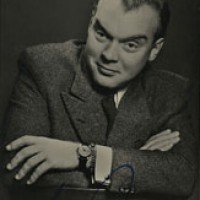Hans Richter
Berlin, Germany - 01.02.1976, Minusio, Switzerland

He graduated from the Falk Real gymnasium in 1906 and afterwards graduated from the art academy in 1909. He fought in WW I until 1916 when he was injured and discharged from the army in Switzerland. In 1919, he made his first painting and two years later made his first abstract film. At that time Walther Ruttmann and Viking Eggeling were pioneers of experimental animated film. They painted pictures directly onto film material. Richter pushed this technique farther by creating scenes in which abstract forms moved to the rhythm of accompanying music. He was the main producer at the film company Central-Film in Zurich, and also worked as a designer, art consultant, film and music critic. He collaborated with film legends such as Eisenstein, but after the Nazis came to power he was forced to leave Germany. He spent several years traveling around Europe. In 1941 moved to the US where he soon received citizenship. In 1942, he started to work as a professor at the Institute of Film Techniques City College in New York. He directed his feature film in color Dreams That Money Can Buy (1947), which won an award at the Venice film festival. In 1952 he moved to Switzerland and continued his career as a film theoretician.
His films made in Germany are Rhythm 21 (Rhythmus 21, 1921), Rhythm 23 (Rhythmus 23, 1923), Rhythmus 25 (Rhythmus 25, 1925), Film Study (Filmstudie, 1926), Inflation (1927), Ghosts Before Breakfast (Vormittagsspuk, 1928), Two Penny Magic (Zweigroschenzauber, 1929), Everyday (1929), Alles dreht sich, alles bewegt sich (1929).